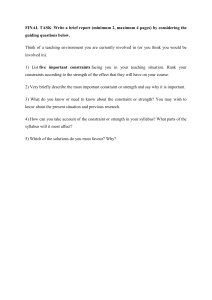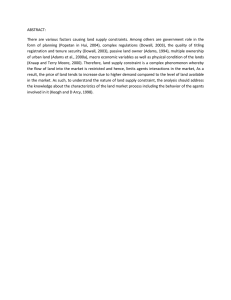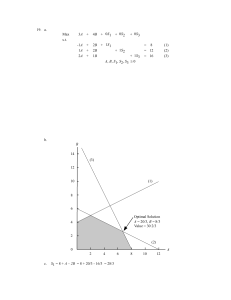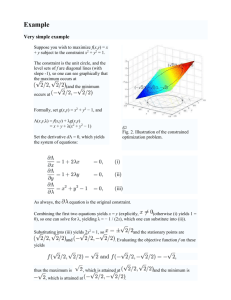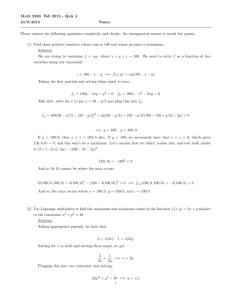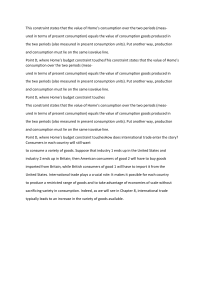exercise4
advertisement
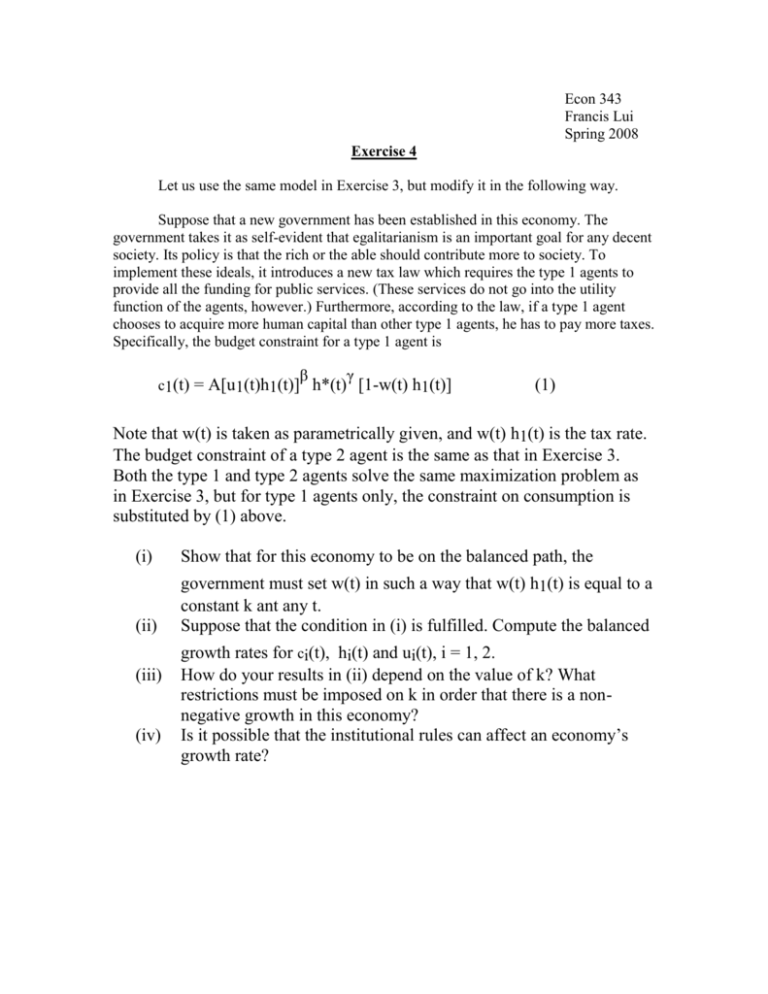
Econ 343 Francis Lui Spring 2008 Exercise 4 Let us use the same model in Exercise 3, but modify it in the following way. Suppose that a new government has been established in this economy. The government takes it as self-evident that egalitarianism is an important goal for any decent society. Its policy is that the rich or the able should contribute more to society. To implement these ideals, it introduces a new tax law which requires the type 1 agents to provide all the funding for public services. (These services do not go into the utility function of the agents, however.) Furthermore, according to the law, if a type 1 agent chooses to acquire more human capital than other type 1 agents, he has to pay more taxes. Specifically, the budget constraint for a type 1 agent is β γ c1(t) = A[u1(t)h1(t)] h*(t) [1-w(t) h1(t)] (1) Note that w(t) is taken as parametrically given, and w(t) h1(t) is the tax rate. The budget constraint of a type 2 agent is the same as that in Exercise 3. Both the type 1 and type 2 agents solve the same maximization problem as in Exercise 3, but for type 1 agents only, the constraint on consumption is substituted by (1) above. (i) Show that for this economy to be on the balanced path, the (ii) government must set w(t) in such a way that w(t) h1(t) is equal to a constant k ant any t. Suppose that the condition in (i) is fulfilled. Compute the balanced (iii) (iv) growth rates for ci(t), hi(t) and ui(t), i = 1, 2. How do your results in (ii) depend on the value of k? What restrictions must be imposed on k in order that there is a nonnegative growth in this economy? Is it possible that the institutional rules can affect an economy’s growth rate?
